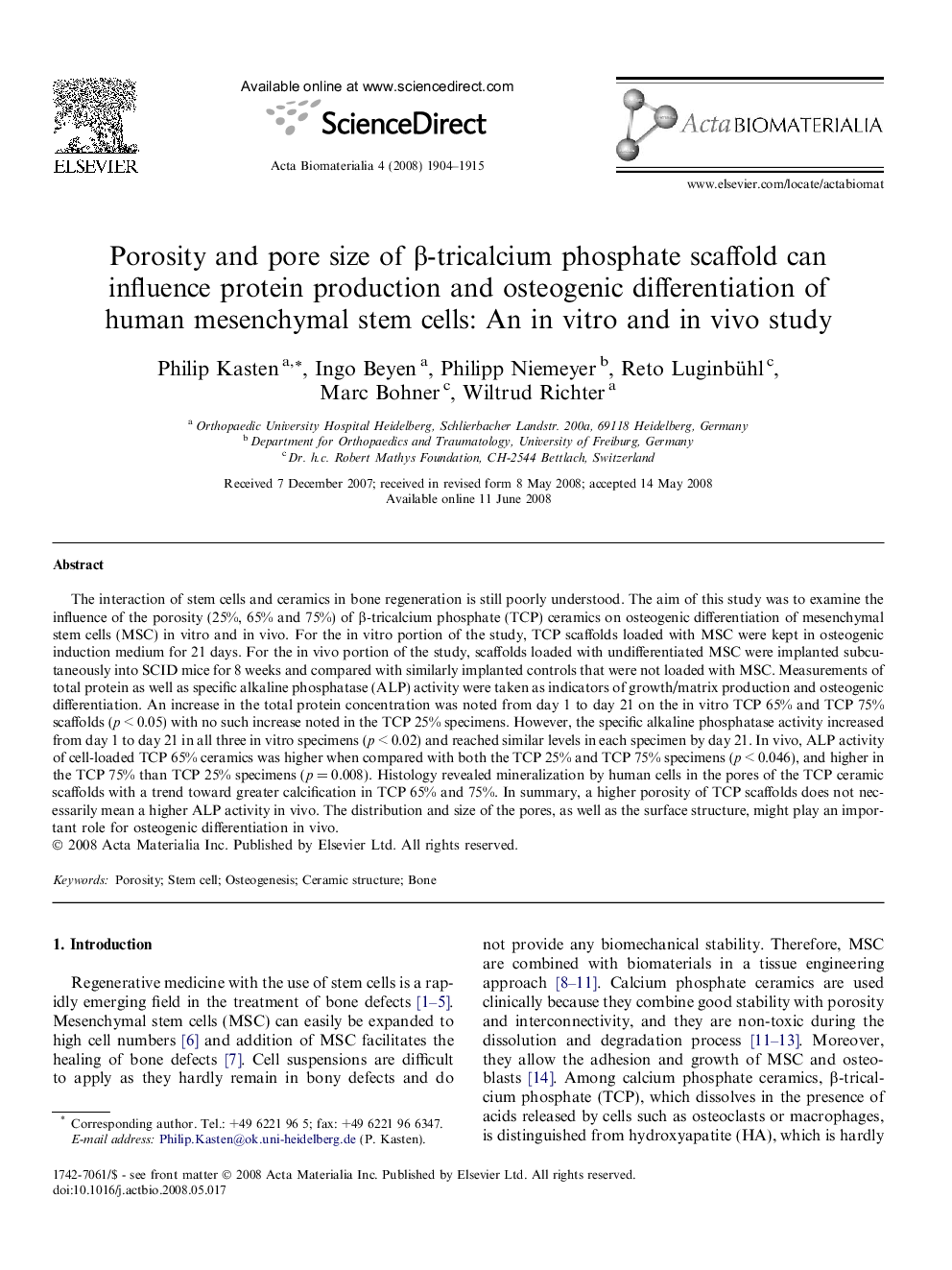| کد مقاله | کد نشریه | سال انتشار | مقاله انگلیسی | نسخه تمام متن |
|---|---|---|---|---|
| 1764 | 90 | 2008 | 12 صفحه PDF | دانلود رایگان |

The interaction of stem cells and ceramics in bone regeneration is still poorly understood. The aim of this study was to examine the influence of the porosity (25%, 65% and 75%) of β-tricalcium phosphate (TCP) ceramics on osteogenic differentiation of mesenchymal stem cells (MSC) in vitro and in vivo. For the in vitro portion of the study, TCP scaffolds loaded with MSC were kept in osteogenic induction medium for 21 days. For the in vivo portion of the study, scaffolds loaded with undifferentiated MSC were implanted subcutaneously into SCID mice for 8 weeks and compared with similarly implanted controls that were not loaded with MSC. Measurements of total protein as well as specific alkaline phosphatase (ALP) activity were taken as indicators of growth/matrix production and osteogenic differentiation. An increase in the total protein concentration was noted from day 1 to day 21 on the in vitro TCP 65% and TCP 75% scaffolds (p < 0.05) with no such increase noted in the TCP 25% specimens. However, the specific alkaline phosphatase activity increased from day 1 to day 21 in all three in vitro specimens (p < 0.02) and reached similar levels in each specimen by day 21. In vivo, ALP activity of cell-loaded TCP 65% ceramics was higher when compared with both the TCP 25% and TCP 75% specimens (p < 0.046), and higher in the TCP 75% than TCP 25% specimens (p = 0.008). Histology revealed mineralization by human cells in the pores of the TCP ceramic scaffolds with a trend toward greater calcification in TCP 65% and 75%. In summary, a higher porosity of TCP scaffolds does not necessarily mean a higher ALP activity in vivo. The distribution and size of the pores, as well as the surface structure, might play an important role for osteogenic differentiation in vivo.
Journal: Acta Biomaterialia - Volume 4, Issue 6, November 2008, Pages 1904–1915